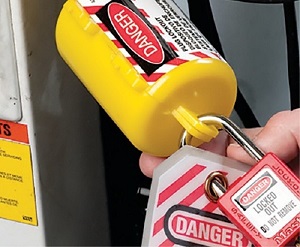Risk Awareness
Hydraulic safety knowledge and respect for the hazards of hydraulics is gained through training and mentoring.
A number of questions need to be addressed regarding safety in hydraulic systems. For example: how many systems have installed isolation devices? And again: when systems are designed, do they have fail-safe devices to prevent crushing or common injuries when fluid that is under pressure is not controlled?
For elements such as mechanical securing platforms, once in place the mechanic can then actuate the valves manually to expel stored energy residual. A pre-installed gauge would verify any existing pressure in the system before removing hoses or components.
Fluid Handling
Another such source of injury is the expelling of fluid through pinholes; such injection of fluid into the skin can cause irreparable harm or even death. Never use your hand to check for a leak in a hydraulic hose. An obvious way to check for leaks is to completely power down the machine and conduct a proper lockout and tagout and check for visible leaks on the machine, hose or the floor.
If that doesn’t work, power down the machine and relieve system pressure by cycling control levers several times. Finally, you can also use protective glasses and gears, or even a 20 x 20 in. piece of hard board or cardboard, to hold in front of you.
(Source: abstract from mobilehydraulictips.com)
